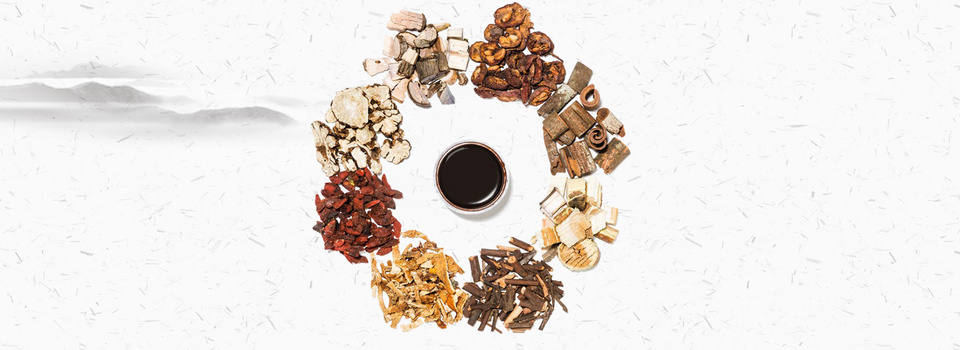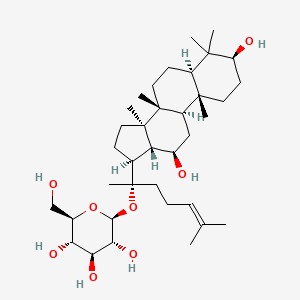20-O-beta-D-glucopyranosyl-20(S)-protopanaxadiol, compound K, compound M1-O, ginsenoside CK, ginsenoside compound K, ginsenoside M1, GM1 saponin



| Name | Ginsenoside compound K | ||
| PubChem CID | 9852086 | ||
| Molecular Weight | 622.9g/mol | ||
| Synonyms |
20-O-beta-D-glucopyranosyl-20(S)-protopanaxadiol, compound K, compound M1-O, ginsenoside CK, ginsenoside compound K, ginsenoside M1, GM1 saponin |
||
| Formula | C₃₆H₆₂O₈ | ||
| SMILES | CC(=CCCC(C)(C1CCC2(C1C(CC3C2(CCC4C3(CCC(C4(C)C)O)C)C)O)C)OC5C(C(C(C(O5)CO)O)O)O)C | ||
| InChI | 1S/C36H62O8/c1-20(2)10-9-14-36(8,44-31-30(42)29(41)28(40)23(19-37)43-31)21-11-16-35(7)27(21)22(38)18-25-33(5)15-13-26(39)32(3,4)24(33)12-17-34(25,35)6/h10,21-31,37-42H,9,11-19H2,1-8H3/t21-,22+,23+,24-,25+,26-,27-,28+,29-,30+,31-,33-,34+,35+,36-/m0/s1 | ||
| InChIKey | FVIZARNDLVOMSU-IRFFNABBSA-N | ||
| CAS Number | 39262-14-1 | ||
| ChEMBL ID | CHEMBL3355096 | ||
| ChEBI ID | CHEBI:77146 | ||
| KEGG ID | C22127 | ||
| Structure | 
|
Download
2D
MOL
3D
MOL
|
|
| Chineses Pinyin | RenShen | ||
| Use Part | Root | ||
| Habitat | JiLin, LiaoNing, HeiLongJiang | ||
| Flavor | Sweet; Slightly Bitter | ||
| Meridian Tropism | Spleen; Lung; Heart; Kidney | ||
| Species |
>Kingdom: Viridiplantae
-->Phylum: Streptophyta
-->Class: Equisetopsida
-->Order: Apiales
-->Family: Araliaceae
-->Genus: Panax
-->Species: Panax ginseng
|
||
| Pair Name | Ginsenoside compound K, Cisplatin | |||
| Partner Name | Cisplatin | |||
| Disease Info | [ICD-11: 2C60] | Breast cancer | Investigative | |
| Biological Phenomena | Inhibition-->Epithelial-mesenchymal transition | |||
| Gene Regulation | Down-regulation | Phosphorylation | AKT1 | hsa207 |
| Down-regulation | Expression | CDH1 | hsa999 | |
| Down-regulation | Expression | CDH2 | hsa1000 | |
| Down-regulation | Expression | FN1 | hsa2335 | |
| Down-regulation | Expression | VIM | hsa7431 | |
| In Vitro Model | MCF-7 | Invasive breast carcinoma of no special type | Homo sapiens (Human) | CVCL_0031 |
| Result | Both CK and DDP can inhibit the proliferation, EMT, and induce the apoptosis in MCF-7 cells, which may be related to the PI3K/Akt pathway. In addition, the combination of CK with DDP can produce a better effect | |||
